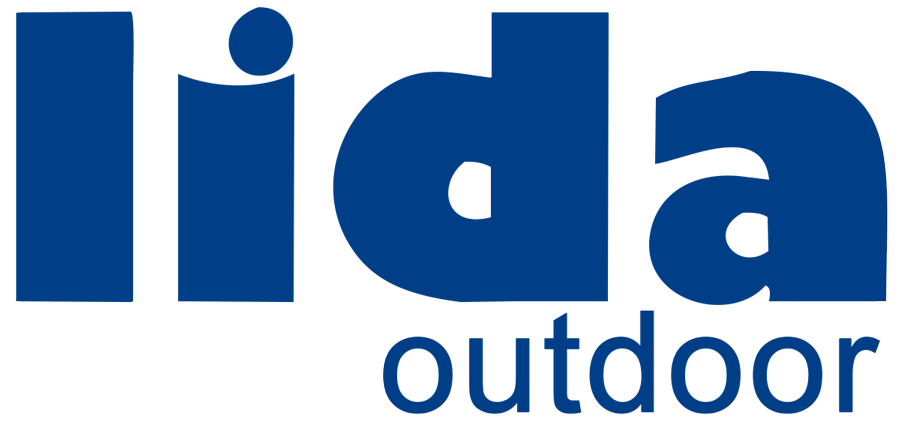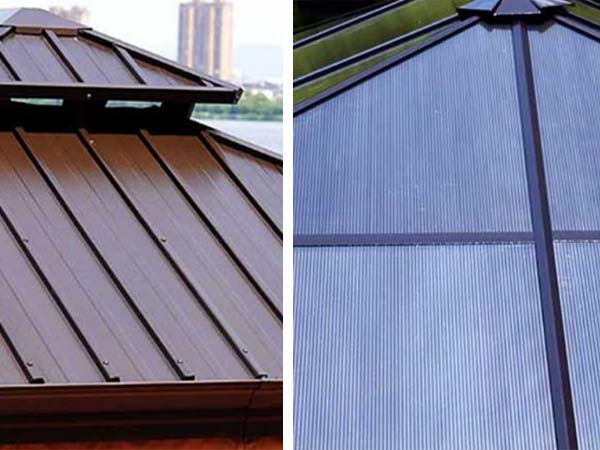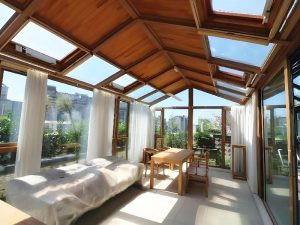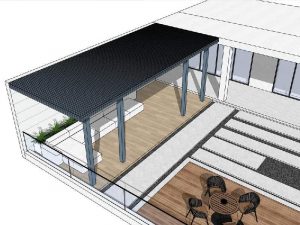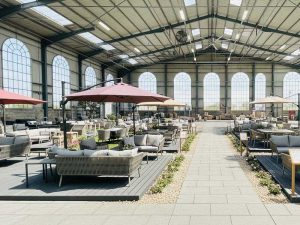When picking out a gazebo, one big question always comes up—what’s the best roof material? Whether you’re sprucing up your backyard, stocking up for retail, or managing a bulk project, the choice usually boils down to two options: polycarbonate or galvanized steel. This choice isn’t just about appearance. It also affects structural strength, shipping, ease of installation, and long-term satisfaction.
At LIDA OUTDOOR, with over 20 years in gazebo manufacturing, we’ve seen it all. In this guide, we’ll break down the pros and cons of each roof type from different user perspectives. No matter your budget, climate, or customer base, we’ll help you find the best fit. And if you need bulk orders or custom designs, we’ve got your back.
Polycarbonate vs Galvanized Steel Gazebo Roof
Before we dive into the details, here’s a quick comparison chart. It gives you a fast overview of the key differences between polycarbonate and galvanized steel roofs—think weight, appearance, durability, and more.
| Feature | Polycarbonate Roof | Galvanized Steel Roof |
| Weight | Light | Heavy |
| Wind and Load Resistance | Moderate (needs proper frame) | High |
| Light Transmission | Good (optional levels) | None |
| Heat Insulation | Good (hollow structure) | Average |
| Lifespan | 5–10 years | 10–15 years |
| Visual Style | Sleek and modern | Premium and solid |
| Cost per Unit | Slightly lower | Slightly higher |
| DIY-Friendliness | Easy to install | Requires skilled assembly |
Polycarbonate Gazebo Roof
Polycarbonate roof panels have become a popular choice in the outdoor furniture market, particularly on e-commerce platforms and in retail stores. Their lightweight build, clean look, and light-filtering ability make them a favorite among DIYers, homeowners, and brand sellers.
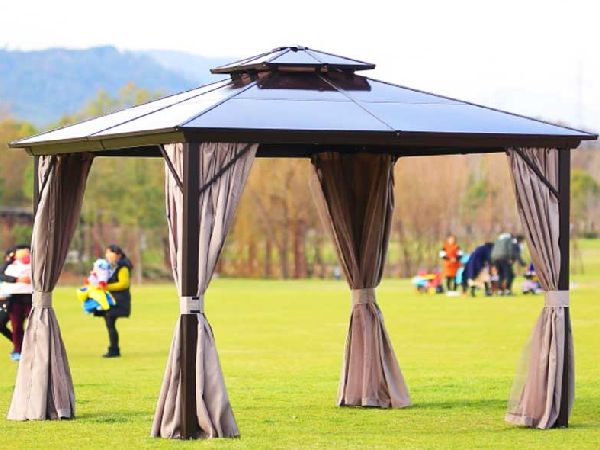
1. Advantages
Let’s take a closer look at what makes polycarbonate roofs such a popular option.
1) Adjustable light transmission and thickness
Standard polycarbonate panels come in double or triple layers, ranging in thickness from 4mm to 16mm. Double-layer panels are commonly 6mm, 8mm, or 10mm thick, while triple-layer panels can be up to 16mm thick. Light transmission can vary from 15% to 89%, giving you flexibility to match your needs.
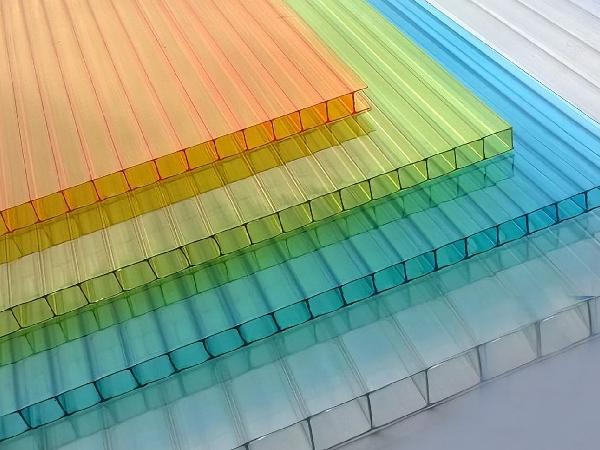
2) Lightweight for easier shipping and setup
These panels are much lighter than steel, saving on shipping costs. They’re perfect for long-distance shipping and easier to assemble at home. This makes life easier for end users as well—less hassle during setup and fewer installation-related complaints.
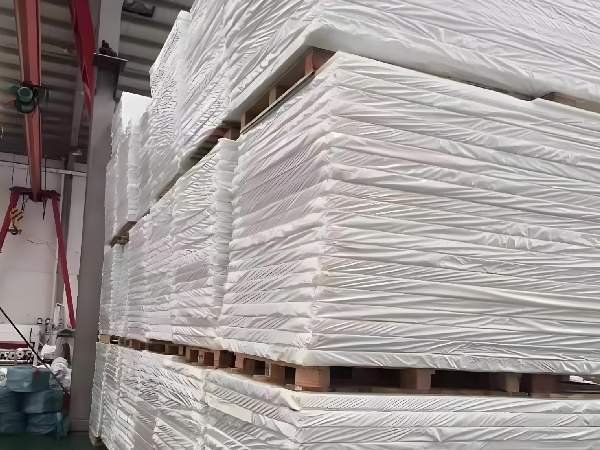
3) Sleek look with multiple styles
Polycarbonate roofs are both practical and good-looking. You can choose from clear, milky white, bronze, green, and other shades. This flexibility helps match various design themes, including modern, minimal, and garden-style.
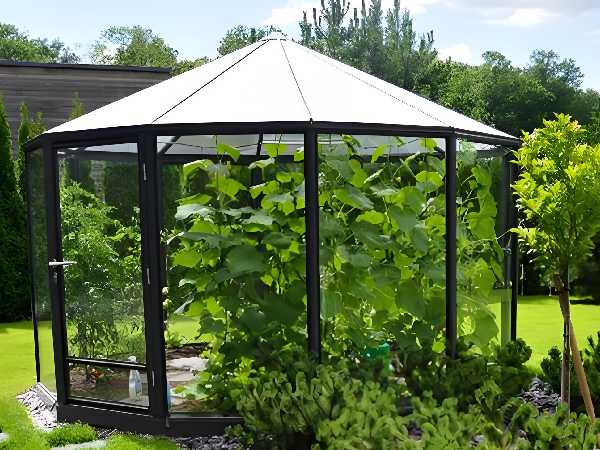
4) More affordable, better value
Compared to galvanized steel, polycarbonate roofs are less expensive. For small to mid-size gazebos, they offer excellent value. That means better profit margins for sellers and more competitive prices to attract online buyers or first-time customers.
5) UV protection extends lifespan
High-quality panels come with UV coatings that protect against sun damage. These coatings help maintain light clarity and structural strength for up to 10 years, even under harsh sunlight. This reduces issues like yellowing or cracking, which can lead to customer complaints or returns.
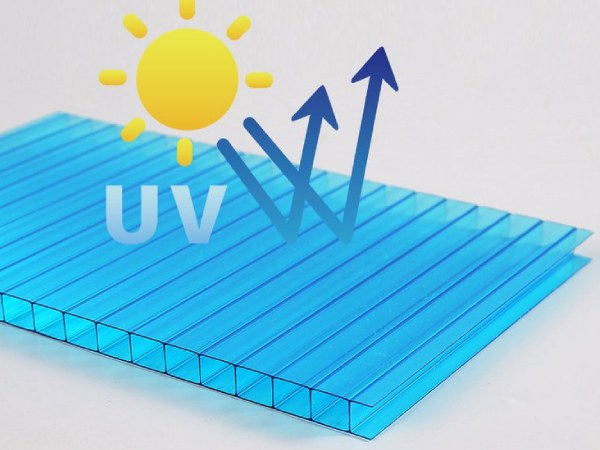
2. Disadvantages
1) Limited weather resistance—quality matters
Even though premium PC panels come with UV protection, standard models may struggle in harsh weather conditions. Think strong UV, acid rain, or heavy snow. These can speed up aging or cause warping. So, it’s crucial to check the grade and UV coating from your supplier, especially if the gazebo will face extreme climates.

2) Average heat insulation—can get hot in summer
Hollow-core polycarbonate panels offer some insulation, but overall, polycarbonate doesn’t block heat as effectively as a metal roof. On hot days, the temperature inside the gazebo may rise quickly. Using reflective coatings or adding curtains can help improve comfort and avoid overheating.
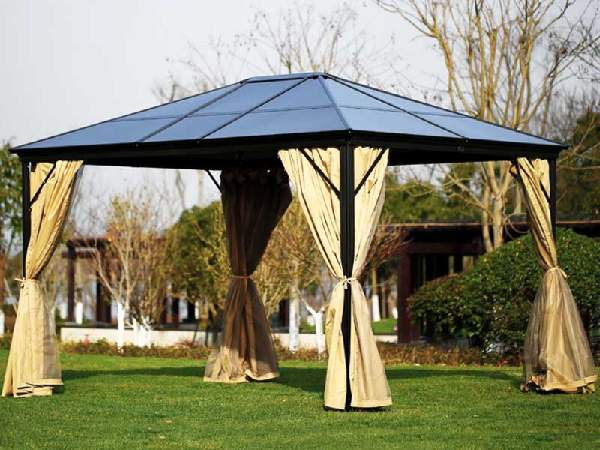
3) Needs strong framing—wind resistance isn’t its strength
Polycarbonate is lightweight, which is great for shipping, but it also means lower wind resistance. To keep things safe and stable, pair it with a sturdy frame. In high-wind areas, avoid using PC roofs alone without proper structural reinforcement.

Galvanized Steel Gazebo Roof
If strength, wind and snow resistance, and long-term durability are your top priorities, galvanized steel is likely your best bet. With high structural integrity and great weather resistance, it’s ideal for commercial use, large-scale projects, or areas with extreme climates.
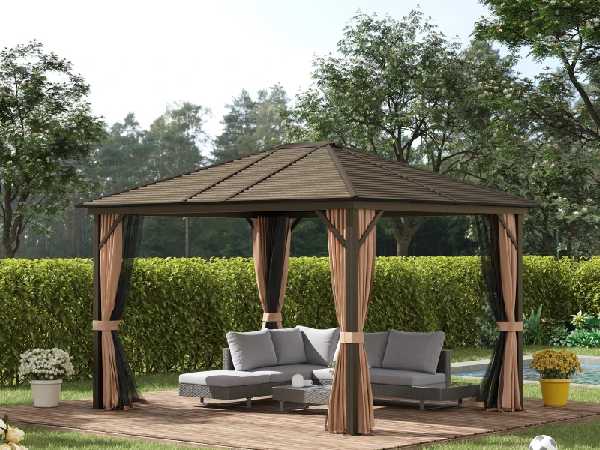
1. Advantages
1) Excellent corrosion resistance—great for humid or coastal regions
Galvanized steel is treated with a hot-dip zinc coating, giving it strong anti-rust and anti-corrosion properties. It stays solid even in salty air, heavy rain, or high humidity environments. This makes it a smart choice for tropical, coastal, or rainy areas, helping reduce maintenance costs and after-sales issues.
Also Read: How Much Wind Can a Gazebo Withstand?
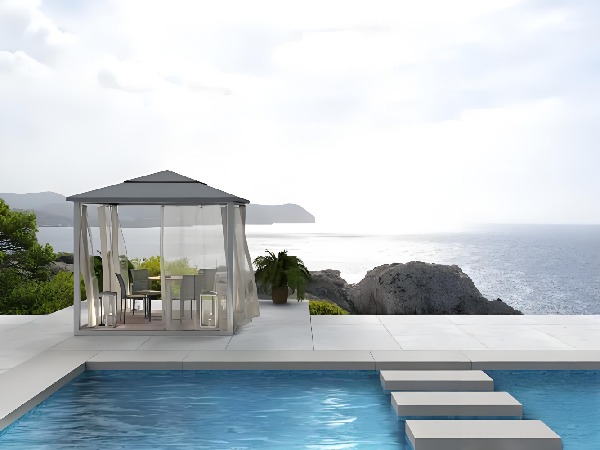
2) High strength for heavy loads and harsh weather
Galvanized panels range in thickness from 0.12mm to 1.2mm—most roofs use panels that are 0.45mm to 0.75mm thick for balanced strength and manufacturability. It’s tough enough to handle strong winds and heavy snow without much effort. It’s perfect for large gazebos or commercial projects that require long-term safety and a reliable structure.
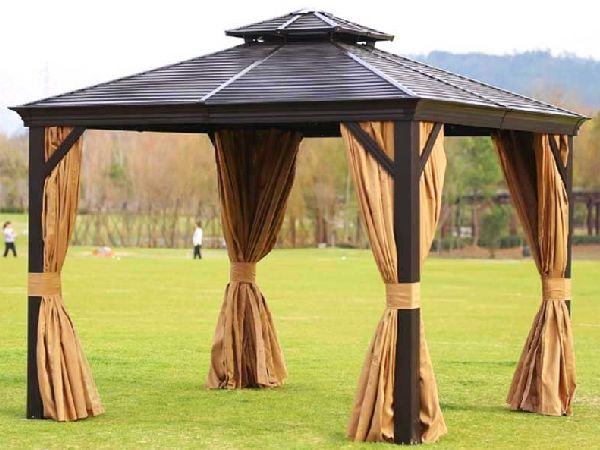
3) Long service life—less need for replacements
With basic upkeep, a galvanized roof can last over 15 years. Its long-lasting durability is great for customers who want low-maintenance outdoor spaces and products built to last. That also means better customer retention and fewer replacement costs for sellers.
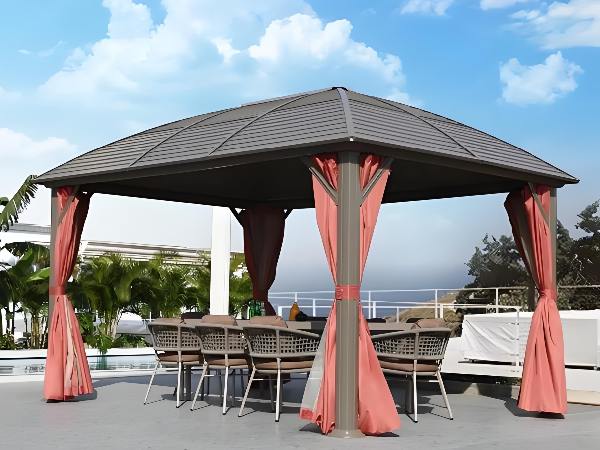
4) Low-maintenance and easy to clean
The smooth surface prevents dust and leaves from building up. A quick rinse is usually enough to keep it looking clean. This makes it perfect for users who want a “set it and forget it” solution with fewer maintenance headaches.
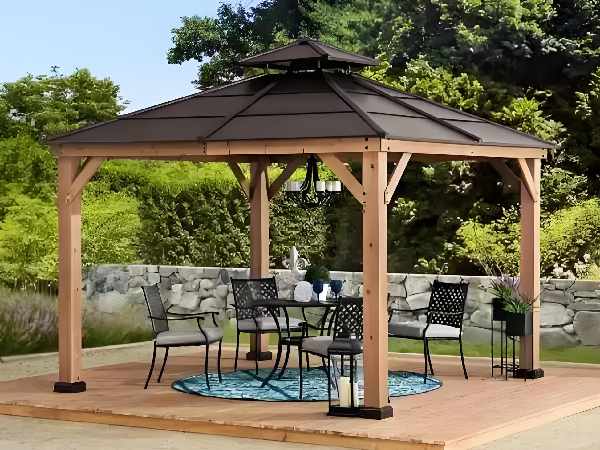
2. Disadvantages
1) Heavier weight means tougher shipping and setup
Compared to polycarbonate, galvanized steel is much heavier. This increases shipping costs and makes installation more labor-intensive. It’s not the best option for e-commerce or DIY customers. Instead, it fits better with local retail or bundled installation services.
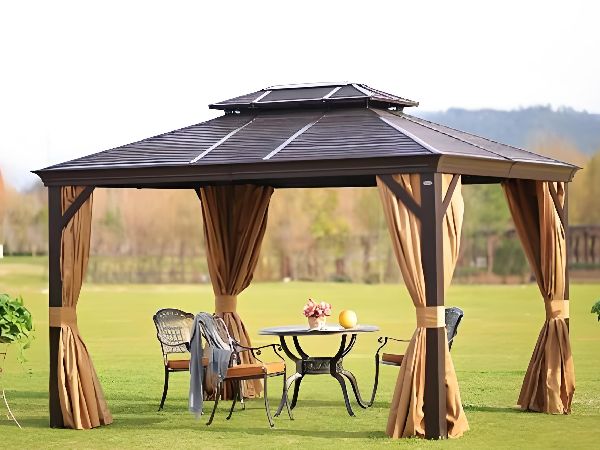
2) No light transmission—no natural lighting
Steel roofs are solid and don’t let in any sunlight. This can make the inside of the gazebo feel dark during daytime use. If your end users want natural light, consider adding side windows, lighting fixtures, or combining steel with light-permeable materials.
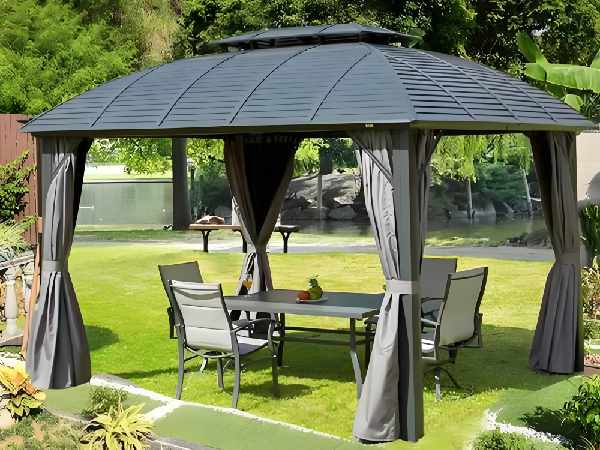
3) Higher material and production costs
Galvanized steel is more expensive than polycarbonate, both in terms of raw materials and processing. Coating and shaping also add to the final cost. While it pays off in durability, it may not suit price-sensitive buyers. If you’re focused on budget, you might want to explore other roof options that are lighter and more affordable.
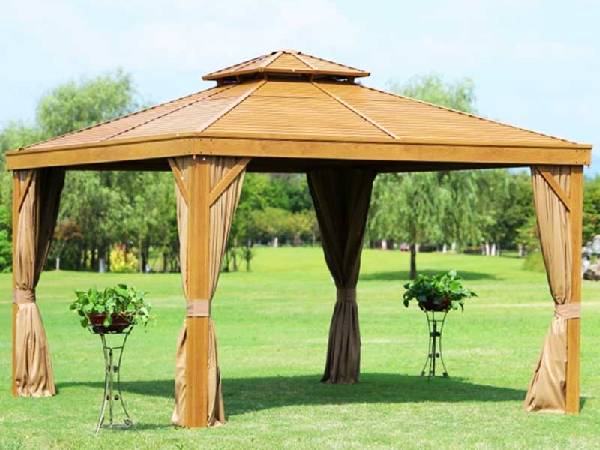
Conclusion
Both polycarbonate and galvanized steel have their own strengths and ideal uses. Your choice depends on budget, target market, and customer needs. Polycarbonate roofs offer style, flexibility, and are great for fast-moving markets. Galvanized steel roofs focus on strength and longevity, making them ideal for premium or long-term projects.
At LIDA OUTDOOR, we’ve supported hundreds of global projects with bulk production and custom solutions. If you’re looking for hardtop gazebos that truly fit your strategy, feel free to reach out. We’re happy to share samples, product catalogs, or custom suggestions based on your needs.
